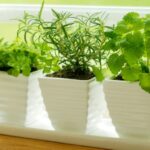Could Your Houseplant Be Suffering from Salinity in the Soil?
Is your plant looking sickly, and you’re unsure why? If you’ve tried everything but can’t pinpoint the problem, high salt levels in the soil might be the culprit.
Why Salinity Buildup Happens
Excess salt in houseplant soil is a common issue for plants that have been in the same soil for a long time or have been over-fertilized. Chemical fertilizers, in particular, can lead to high salt levels in the soil. Some houseplants even arrive with too much fertilizer from growers trying to speed up their growth.
How to Spot Signs of Toxic Salt Buildup
Here are common indicators of salinity problems in your plant’s soil:
- White Crust in the Pot
Look for white crust around the pot’s upper edge or drainage holes. - White Buildup on the Soil
A white crusty layer on the topsoil is another telltale sign. - Brown Leaf Tips
Brown tips, especially if the plant is well-watered and not dried out, may indicate salt stress. This symptom can also be a sign of low humidity, so rule that out first. - Overall Sickly Appearance
If your plant used to look healthy but is now declining without a clear cause, salinity could be the issue.
How to Manage Salt Buildup in Houseplant Soil
There are several steps to reduce salt in soil:
- Remove Salt-Buildup Soil
Remove the top inch of salty soil and replace it with fresh, organic potting soil. - Rinse the Soil (Leaching)
Flush the soil with water, using an amount that is at least three times the size of the pot. Filter water through slowly, ideally using reverse osmosis water, to wash away salts. - Repot the Plant
For severe salt buildup, repot your plant in fresh soil. Remove the plant from the pot, shake off the old soil, rinse the roots, and replant in a new pot or the same pot after scrubbing away salt residues.
Patience Pays Off
Wait about a month after treating salt issues to see improvements. Your plant should gradually show new, healthier growth.
For a full video guide, visit our YouTube channel.





